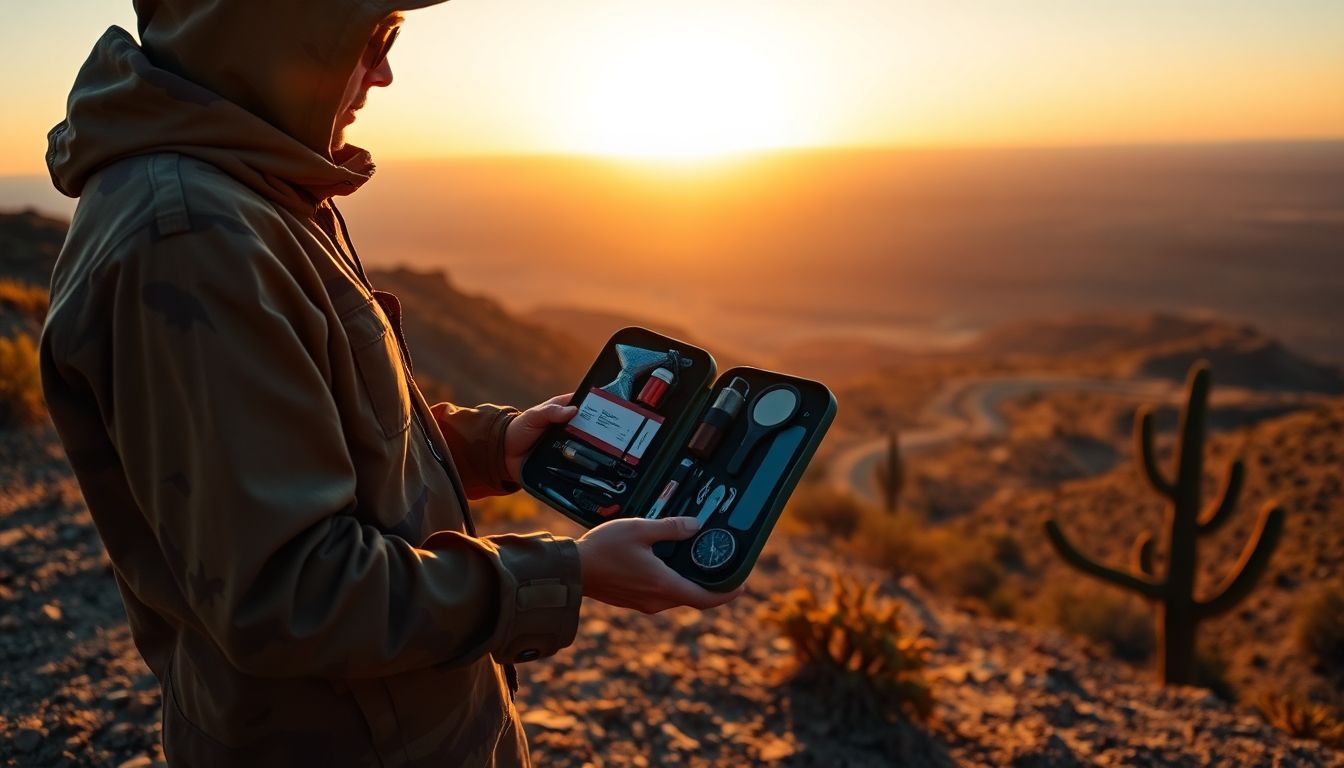When lost in the desert, hearing the rays of the sun burning down over you while your water has all dried up; there couldn’t be a worse time. But, letting go of some of these vital skills may just save your life.
A desert is a dry place: Little water, high heat. The need for survival skills there is important. You must know even if you don’t plan on an adventure in the desert.
Finding and Purifying Water in the Desert
Water is the ultimate need for desert survival. You can survive weeks without food, but you cannot last long without water.
Potential Water Sources
Look for some signs. Animal tracks usually travel to water sources. Green plants in an arid land? Great sign. Washes and canyons might hold water after it rains.
Willows and cottonwoods require quite a bit of water. Find these trees and you might just find the water close by. Test the ground for dampness. If need be, dig.
Water Collection Techniques
A solar still can become a life-saver. Make a hole and position a container in the center. Set some green plants around the container. Cover the hole with plastic sheet. Place a stone in the middle of the plastic above the container. The water will evaporate under the sun, undergo condensation on the plastic, and drip down into the container.
Another dew-collecting technique is to wipe it from plants using a cloth and squeeze it into a container.
Water Purification Methods
Most probably, the desert water isn’t clean. It has a level of possible bacteria. You really don’t want to get sick. Boiling cleans the bad from the good. Boil for one full minute.
Purification tablets will also work. Perform as per instructions on the label. For a quick filter make use of cloth, some charcoal, and sand. Place them in layer format in a bucket. Pass the water through them for the dirt to be removed.
Building Shelter and Temperature Regulation
Shelter protects you from the sun and cold. It keeps you alive. You need it to survive the harsh weather.
Choosing a Shelter Location
Shade is key. Protection from wind helps. Avoid low areas that can flood. Stay away from animal homes.
Look for rock overhangs or thick bushes. These spots offer natural protection. Think about the sun’s path during the day.
Constructing Different Types of Shelters
A debris hut is easy to build. Lean branches against a support. Cover them with leaves and dirt. This creates a small, insulated space.
Rock overhangs can be used as a wall. Build a small wall to enclose the space. Dugouts offer good protection. Dig into a hillside to create a cool space.
Temp Control
During the day, keep cool. Conserve your energy. Rest under shade. Cover your skin. Wet your clothes to cool off.
At night, keep warm. Insulate yourself. Use extra clothing or blankets. Build a small fire to warm your hands.
Finding and Preparing Food in the Desert
Food is lower on the priority list. But it helps you stay strong. It gives you energy to survive.
Edible Plant Identification
Watch what to eat. Some plants are poisonous. Stick to the plants you know. Cacti can be a food source. Prickly pear cactus fruit is edible.
Agave plants can be eaten after cooking. Yucca roots are also edible when cooked. You should know which plants to avoid.
Small Game and Insects
Insects are an abundance of protein. Grasshoppers and crickets are common. Roasting them will kill mating parasites.
Set a few rickety traps. Snare hunting will allow you to catch small animals. Lizards and rodents are edible sources of food.
Food Preparation Safety
Cooking kills the parasites, hence making the food safe. Cook the flesh and eat plants only when thoroughly prepared: in water, over the fire, or sunbaked.
Wrap food in foil and bury it in hot sand, allowing the sun to do a slow and gentle cook. Ensure the food reaches your desired amount of warmth right through.
Navigation and Signaling Help
Finding your way back is important. If not, getting found is essential. You need to know how to do both.
Using Natural Ways to Navigate
The sun rises in the east. It gets down in the west. Use it to get the bearings you want. Use the stars to guide you in the night too.
Learn some constellation identification. Rely on the land. Look for some landmark-type things, like mountains, and keep them in sight.
How to Make Signals for Rescue
A fire attracts attention. A large signal fire must be made. Add green branches for smoke. A mirror reflects sunlight.
Use a mirror for the flashing signals. Make ground signals. Rocks can help you put down large arrows. Put SOS on the ground.
Desert First Aid Skills and Common Hazards
Knowing first aid saves lives. Getting to grips with injuries and health issues are your basics. Be prepared for common problems.
Treating Dehydration and Heat Stroke
Dehydration is dangerous. Water is good to drink. Without water, conserve sweat. Rest under the shade.
Heat stroke is an emergency. Cool down the person quickly. Use water or ice packs. Get them away from the sun.
Dealing with Snakebite and Scorpion Sting
Know your venom snakes so you can keep away from them. If bitten, let calmness bear down on you; keep the bitten part below the level of the heart.
Scorpion stings are very painful. Apply ice to reduce swelling. Seek medical assistance if necessary.
Conclusion
Desert survival takes skills. You must find water, build a shelter, and find food. Learn to navigate. Know everything about first aid. Always be prepared. Knowledge and a good attitude are your tools. Learn more. Practice these skills. It may one day save your life.




